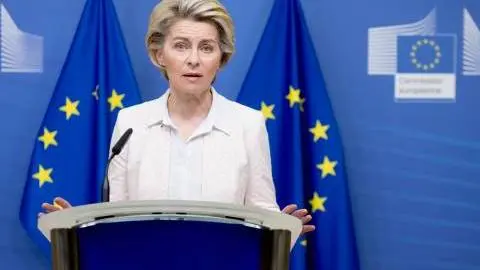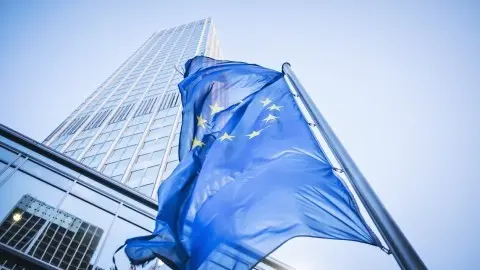ECB: Bridging the time to herd immunity
The European Central Bank did not present a big new bazooka but a well-engineered extension of all well-known instruments to ensure that the current level of monetary accommodation is extended until at least the spring of 2022, hoping for the vaccine to have done its job by then
Extend rather than increase monetary stimulus. This is the main takeaway from today’s ECB meeting. As expected, the ECB left interest rates unchanged but decided on a set of recalibrations to its existing measures, all aimed at extending the current monetary stimulus by roughly nine months. Why nine months? Well, ECB President Christine Lagarde explained it clearly: with nine months, the current measures are extended until early 2022, the moment when - according to the consensus expectation of virologists and vaccine experts - herd immunity in the eurozone should have been achieved and the economic recovery can finally take off. Here are the main elements of the ECB’s policy decisions and the most interesting comments from the press conference.
Today's main ECB decisions
- Pandemic Emergency Purchase Programme: The ECB’s emergency quantitative easing programme will be increased by €500 billion to a total of €1.85 trillion, to ensure that net purchases will last at least until March 2022.
- Reinvestments: The reinvestments of the principal payments from the PEPP purchases will run at least until the end of 2023.
- Asset Purchase Programme: The ECB’s ‘traditional’ QE programme to bring inflation back to target continues to run at €20bn per month, open-ended.
- Pandemic emergency longer-term refinancing operations (PELTROs): The ECB’s emergency funding scheme will be continued into 2021, with four operations.
- Targeted longer-term refinancing operations (TLTROs): The ECB’s funding-for-lending scheme will be extended by 12 months until June 2022, and the amount banks can get from the ECB was increased to 55% of the eligible loan stock, from 50%.
- Collateral: The easing of collateral rules was extended in line with the extension of the TLTROs until June 2022.
In short, the ECB tweaked all its instruments to extend the current level of monetary accommodation until spring 2022.
Main takeaways from the press conference
In the ECB’s macro-economic assessment there were very few surprises. Back in September, the ECB had still been optimistic on the fourth quarter but the recent lockdowns mean it now expects a contraction. As a result, the ECB’s staff projections for 2021 were revised downwards but revised upwards for 2022. The staff projections show GDP growth rates of -7.3%, 3.9%, 4.2% and 2.1% for the years 2020 to 2023. With the expected roll out of a vaccine, according to the ECB, the medium-term prospects for growth have improved, which explains why the ECB sounded somewhat less alarmist with its risk assessment, adding that the downside risks have become less pronounced.
As regards inflation, ECB staff expect headline inflation to come in at 0.2%, 1.0%, 1.1% and 1.4% in the period from 2020 to 2023. These are slight downward revisions for 2020 and 2022. However, the forecast of 1.4% for 2023, even without taking today’s decisions into account, indicates that more action will be needed to bring eurozone inflation back to target.
Against the background of a recent strengthening in the euro exchange rate, the ECB and ECB President Lagarde could not avoid addressing this topic. Contrary to the unclear message on the exchange rate at the September meeting, the wording was clear today: the ECB doesn’t target exchange rates but the exchange rate plays an important role for price developments. Therefore, the ECB will monitor the exchange rate “very carefully going forward”. Very little more Lagarde could have said on this one.
No big bazooka but central bank engineering
All in all, today's ECB meeting was rather unexciting with a well-balanced and well-considered extension of the well-known policy instruments. No big new bazooka. The ECB continues to follow two main aims: keep financing conditions as favourable as possible and prevent any new euro crisis on the back of an unwarranted widening of government bond yields (a.k.a. keeping the transmission mechanism smooth). The ECB has linked its policies to the virus and the vaccine. All measures are now timed and tied to the assumption that the vaccine will bring herd immunity in all eurozone countries by the end of 2021. Tweaking the duration of all measures is still possible, a real stepping up of the measures is really not. For the time being, the ECB is leaving the big bazookas to governments and concentrating on real central bank engineering.
Download
Download snap
11 December 2020
Hard choices, hard Brexit, hard luck This bundle contains 6 articles